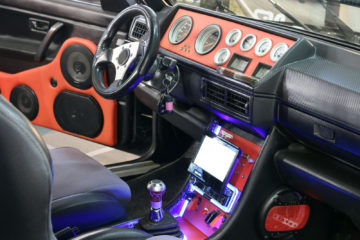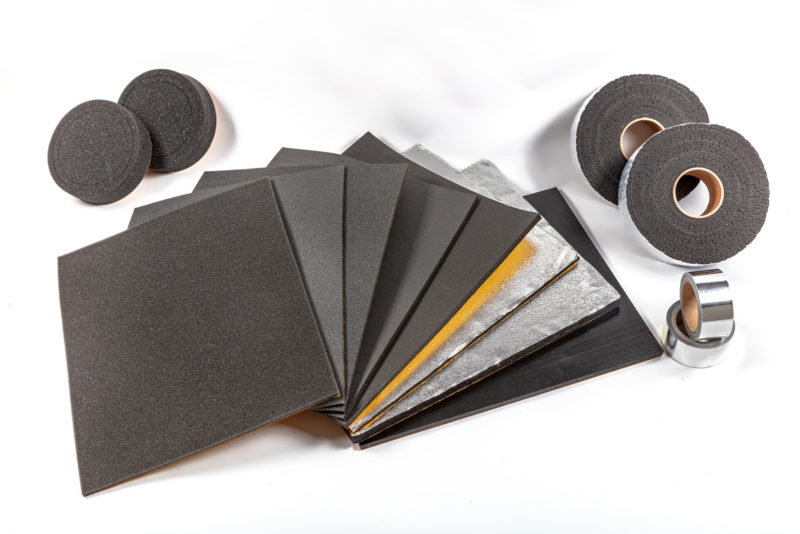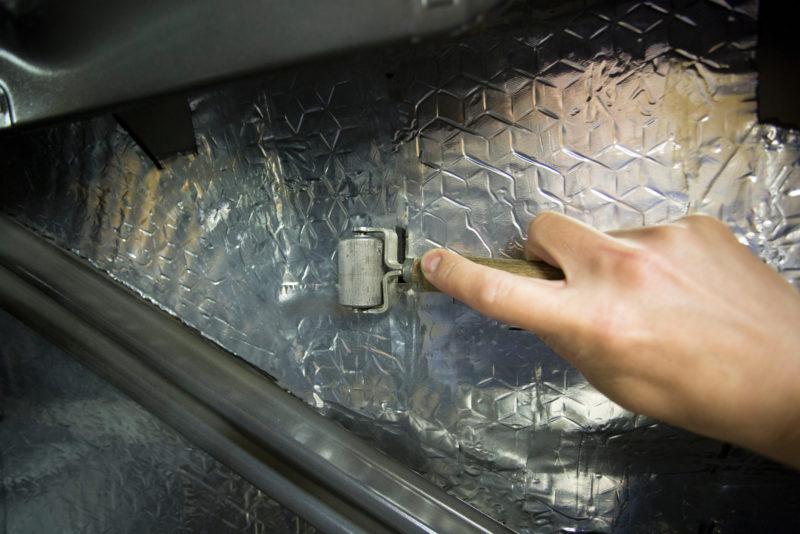How to Navigate Audio File Recovery on Digital Voice Recorders
Use this step-by-step instruction here to learn how to navigate audio file recovery on digital voice recorders.

We’ve all heard it before. The earth-shattering bass coming from the vehicle three cars in front of us. The ear-splitting resonate vibrations shaking the trunk, the annoying little rattle from the barely dangling license plate.
The truth is, with a great system, the car next to you will hear a bit of what you’re bumping, but if they’re hearing it all, if they’re hearing the trunk shake and the license plate rattle, there is a good chance there are things you’re not hearing. That’s because an optimally soundproofed vehicle doesn’t only keep the noise from leaking out or rattling your bumper; it keeps that noise in.
If you want to have the best audio quality possible and keep the car behind you from ramming your rear end, properly soundproofing your vehicle is the way to go.
Now, this might not be something on the top of audiophiles’ concerns list, but by properly sound deadening your car, you’ll cut down on the audio escaping from your 4-inch car speakers through the cracks. There is currently no federal law against loud music, but a ton of states, cities, and counties have their own regulations. If you don’t want to turn down that Brittany Spears track when you hit the intersection or fiddle with the dial when the Five-O rolls up behind you, consider sound deadening your interior.
An added benefit to the sound deadening process will be a reduction in road noise heard in your vehicle’s cabin. So whether you’re looking to enjoy audio without interference or talk on the phone without shouting, sound deadening is a no-brainer.
When you consider the average human ear can handle a continuous noise decibel level of under 80 dB and a car with the windows open is around 80 dB by itself, reducing the road noise to improve your audio experience and the wear on your ears makes complete sense.
For audiophiles, noise lost to a poorly sound-damped car should be at the top of your list.
Because soundwaves travel through a variety of materials with more or less success, without proper sound damping material installed, you can lose all that great sound you’re looking for right out of the car’s metal.
This is especially true when you install a subwoofer (see the best 8 inch subwoofer here) in a trunk (rather than using a shallow mount subwoofer). Trunks are designed to be waterproof, but because they don’t contain seats, there is virtually no or very minimal factory sound deadening found in most of them. That means all that quality boom is just escaping out the back.
With a properly sound-deadened car, you can get by with less expensive audio equipment.
Not only will the cut down on road noise allow you to hear your audio at lower volumes, but by insulating all the nooks and crannies audio usually escapes, you’ll actually keep the sound in. That will mean you can get away with a lower-powered sub and amp and even install speakers that may distort when they’re all the way up.
The bottom line is, if you’re looking to save in the long run, throwing a little upfront into your sound deadening is the way to go.
There are a few simple tools and steps to soundproofing your vehicle and a few, in particular, to keep in mind.
You’ll need some basic equipment you’ll need on hand to get going when soundproofing your vehicle. Make sure you have:

Car sound insulation materials.
There are a few different materials you can use, each with its own benefits and drawbacks. You’ll want to choose a material that meets your needs, your budget, and the amount of work you’d like to put in.

Noise insulation of a car.
Sound damping properly means keeping noise from getting in and out. With that in mind, you can virtually sound dampen your whole car for the best possible return. Here are a few key locations to start with.
Your car’s firewall separates the engine compartment from the passenger compartment. Sound damping here will reduce engine noise.
Your floor pans and wheel wells especially pick up road noise and reverberate it through the car. Deadening these areas should help keep excessive noise out.
Believe it or not, most doors are somewhat hollow inside all of that plastic. That space between the car’s steel and the plastic has prime acoustics to transfer noise. So throwing a bit of foam inside should stop the noise and cut down on vibrations.
All of you Jeep wrangler owners understand the importance of deadening your car’s roof. Often a vehicle will have only thin foam and a headliner between you and the noise conducting steel over your head.
This is the spot to focus on if you’re adding a 12 inch subwoofer to your vehicle’s system. Trunks especially aren’t designed with noise damping inside. So if you want to keep the noise in for better audio quality, you’ll want to line your trunk like there’s no tomorrow.
Once you have all the materials, have decided what layers you’ll be putting down, and have outlined the areas you’ll focus on, you’re ready to actually get started.
The first step in starting involves removing all of the material in front of the area you’ll be deadening. You’ll want to remove any door panels, carpets, liners, seats, or anything else in the way of the site you’re focusing on.
Keep in mind that even if you plan on working around something like a seat, you’ll want to tape it off and keep it out of the way of harm from any cleaners or rubbers being used.
Pro Tip: label a plastic bag and throw all the little bolts, screws, or clips from each section in it. It’ll save you hours of searching and guessing and possibly a trip to the auto shop.
Once you have the area cleared, you’re going to want to wipe it down and clean it. Any adhesive you put down will work best if it contacts just the metal, so you can use soap and water to start but always want to finish with alcohol or acetone.
Once the area is cleared and cleaned, you’re ready to throw down the material. Measure and cut everything you’re working on before you lay anything down so it’s ready to go and so you know you have enough to do the job.
When your materials are cut and ready to install, you can begin to lay them down. Whatever material you choose, the important thing to remember is to lay it flat on the surface and get all the air bubbles out. I suggest starting in one corner and rolling it out as you go.
If you’re using a sound dampening butyl mat, now’s the time to get out the air gun and heat it as you go. The heat will ensure a smooth, air bubble-free layer on your car’s surface.
Pro Tip: If combining deadening materials, make sure the butyl mat goes down first, as it’s only effective when in contact with bare metal. For the best effect, throw down your closed-cell foam on top of it and under your car’s factory carpet, liner or panel.
Once the sound dampening material is completely down, smooth out any bumps and fill any gaps you’ve missed. Keep in mind that the sound waves coming in and out will look for openings to filter through.
Waiting for the material to dry is a crucial step in the deadening process. Waiting allows the material to adhere properly and work correctly. It’ll also keep your carpets, seats, liner, and door panes clean.
Depending on what brand you go with and the method of sound dampening you choose, there will most likely also be a smell. While waiting for the material to dry, roll down the windows or open the doors and let your vehicle air out.
Don’t worry, though. The smell shouldn’t stick around.
The final steps of the process are pretty straightforward; the walk around and the drive.
For the walk around, turn up the bass and walk around the car. There will undoubtedly be a noticeable difference, but take note of any areas you still think need improvement. Now’s also the time to get out the screwdriver and tighten any rattling component as well.
For the drive, although you’ll be tempted to crank up your system and enjoy the new vibes, take a few minutes at highway speeds in silence first. You’ll want to hear the dampening effect but also pay attention to any areas you now notice as problems, as the reduced noise may highlight areas to focus on in the future.
Many factory cars, new and old alike, arrive at your doorstep with subpar sound damping features.
Whether you want to enjoy the bump of your system as loud as possible without breaking that pesky city ordinance or just have a quiet, contemplative drive dropping some killer classical on the backroad, soundproofing your car is the way to go to reach those smooth, absorbing roads.